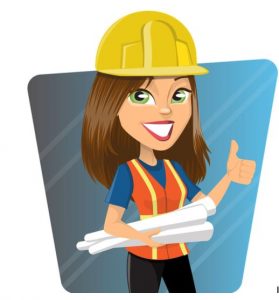Most of us are fortunate enough to live in areas where a variety of contractors are available for most home maintenance needs, including roof repair. But, for those who prefer to maintain a home on their own, working on the roof can be one of the more daunting maintenance challenges.
Before heading up that ladder, some very important precautions should be taken to avoid becoming one of the 15,500 Americans every year injured by falls. Consider incorporating the following recommendations before you head up on the roof.
Ensuring Your Ladder Is Safe
Several steps can be taken to make your ladder more secure during roof work. Ensure your ladder’s feet are on stable, level ground. If you’re working on a patio or other hard surface that may be slippery, inspect the feet of your ladder for grip. Your ladder should have serrated rubber boots on the feet that give it the grip will need.
Make sure your ladder is three rungs, or three feet, above the point at which it touches the roof. This will give you an extra bit of ladder to hold onto while you’re starting your descent. You can also tie the top of your ladder off to a roof bracket. You can purchase roof brackets that can adjust according your roof’s pitch. These brackets are easy to install into a secure point such as a rafter, and will give you a bit of added security, not to mention peace of mind.
Keep The Working Area Clear
Never climb up the ladder with tools or materials in your hand. Instead, put your materials in a five gallon bucket attached to a rope to hoist up once you are on the roof. You can continue to use the bucket to keep tools and materials contained while you are working on the roof.
Larger tools and power tools should be kept free of your immediate working space. Similar to the ladder, tying off power tools to anchor points would ensure they aren’t going anywhere. Or, by resting a 2×4 along two roof anchors you can create a ledge on which to rest your materials and power tools, avoiding the chance they’ll take a tumble.
Personal Safety
Your personal safety should be your top priority while working on the roof. Spending a little money for proper safety gear is well worth the investment. The best piece of equipment you can buy is a safety harness. Wearing a safety harness attached to a secure point of the roof will prevent you from completely falling off the roof. Though a near fall will give you a considerable scare, the safety harness will make sure you don’t fall further. Other personal safety equipment to consider is a hard hat, goggles or safety glasses, and boots with thick rubber tread for grip.
While you’re up on the roof, focus on the task at hand. Don’t let your mind wander, and don’t spend any time looking at the view. If you feel the view calling you, take a break and sit down, or wait until you are done with your work to look around at the scenery. Also, take the weather forecast into mind. You never want to work on a roof that’s wet from rain, or when a forecast for rain or wind is forecasted.
Make sure you are not working alone. You should always have a partner on the ground keeping an eye on you, anticipating any safety issues, and providing you anything you may need, so that you spend less time going up and down the ladder.
Author’s short bio:
Frazier Roofing and Guttering is the second oldest roofing company in Grand Prairie Texas,we have over 18 years of experience in roofing and have been happily serving all of Tarrant County and surrounding cities with their gutter and roofing demands. Founded by Rich & Sheila Frazier in 1977, the year that Elvis “The King” left us. Over the years, we have built up our team of Arlington roofing contractors and have become one of the most distinguished roofing companies in the area.
